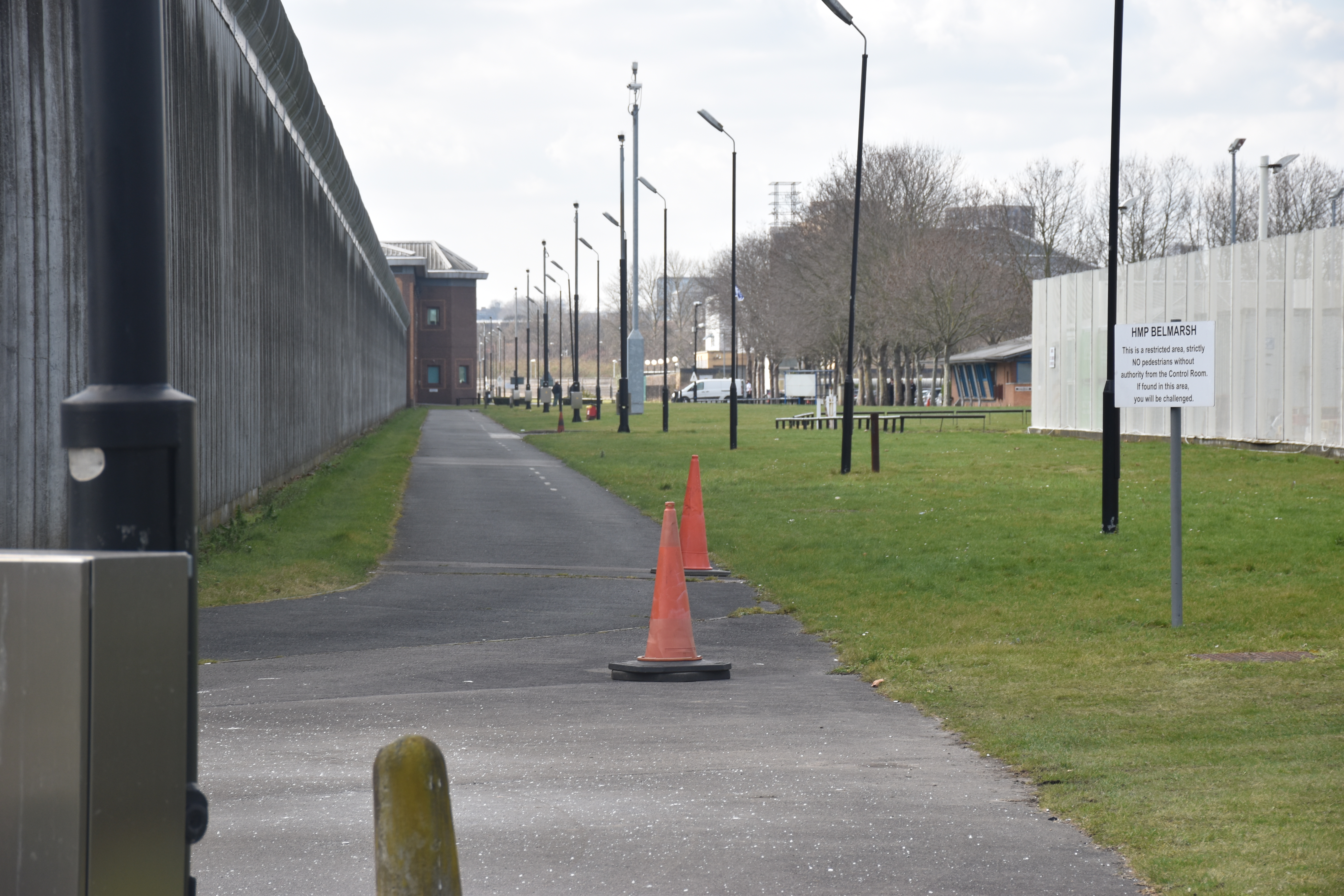
On paper, it's a program that can be lauded for its attention to detail; in practice, things are more complicated. London's highest security program has a radicalization problem, and a bigger problem is how to deal with it.
Commuters pack the London Tube every morning, with some train cars holding more than 90 people at a time. For most, it's a crowded, but efficient way to get around the city. For others, it's a valuable target.
On the morning of September 15, 2017, Ahmed Hassan stepped onto a crowded Tube car carrying a small plastic bag. Hassan would exit that train just before the Parson Greens station, but his bag would stay behind. With the train car stationary, the bag, now known to have held a homemade bomb, exploded, sending a burst of flames through the train car. Thirty people were taken to the hospital with non-life threatening injuries.
Hassan, 18 at the time, was arrested the following day. His court proceedings since show he was in a government-run de-radicalization program while building the bomb. England's MI5 Security Service tagged London with a "SEVERE" threat level for international terrorism, the highest warning there is.
While public de-radicalization programs, like the one Hassan was in, search for answers, a different obstacle looms. The city's highest security prison is trying its own de-radicalization program, only with the country's most notorious convicts.
'Hellmarsh'
The walls surrounding HMP Belmarsh, the city's highest security prison, tower over the highways and industrial parks that surround it. The only building on the prison grounds not restrained by imposing concrete walls and barb wire is the visitor center.
Inside, a small play area for children with bright colored tiles and a small plastic slide contrasts with the harsh prison exterior visible through the windows. In a booth pressed against the wall, Rachel Hopkins quietly waits for visiting hours to begin. She's at Belmarsh to see an old friend who is serving a three year and a half year sentence for drug charges, one of the lighter offenses that can land you in Belmarsh.
"You have to take your shoes off, your socks off," Hopkins says of the intense screening process visitors go through to ensure no contraband is snuck in.
"They go all inside your mouth."
The prison has held a list of unflattering titles in recent years. "Belmarsh prison: 'The jihadi training camp right in the heart of London,'" one Evening Standard headline from 2016 reads. Jeffrey Archer, the former Parliament member who served four years in Belmarsh for perjury coined the name "Hellmarsh" in his prison diary series.
As a maximum security prison, Belmarsh hosts a range of convicts. The most serious, known as "Category A" prisoners, are kept separate from the general prison population like the man Hopkins is visiting. "The longtimers, they're kept separate," Hopkins says, "they don't tend to come out."
A "Category A" prisoner, according to HM Prison Service, is a person whose escape would be "highly dangerous to the public or national security." Belmarsh keeps the most extreme of this category separated, in what can only be described as a prison within a prison. As a result, convicted murderers and terrorists aren't mixing with prisoners holding less serious offenses. Instead, they're grouped together in a community where radicalization and radical thought are the norm. It's a problem the prison is looking to control, in spite of, or perhaps, because of the diverging professional views on radicalization and the need for answers in a time of fear for it's host city.
George Pugh is the Head of Reducing Re-offending at H.M.P. Belmarsh. According to information provided by Pugh, any credible observation of a prisoner trying to radicalize others or spread radical thought will land the prisoner in a part of the prison far from other prisoners who have the potential to be radicalized. The positive? Radicalization is contained. The negative? In concentrated areas, radicalization becomes the norm.
Once prisoners trying to radicalize other inmates have been identified and relocated, they are subject to a variety of different approaches in order to walk back their radicalization. This can mean everything from meeting with a prison Imam to harsher day-to-day conditions, depending how receptive the prisoner is.
It's a systematic approach meant to identify, and, ultimately, contain.
But effective de-radicalization is more complicated that.
"There are massive problems trying to do de-rad work in prisons," Dr. Douglas Weeks says with an even tone to his voice. Weeks is a professor at London Metropolitan University and an expert in radicalization, regularly conducting primary research with radicalized and de-radicalized individuals.
According to Weeks, the common approaches to de-radicalization, including Belmarsh's approach of forced containment, represent a misunderstanding of the whole process. "The one thing that I think is absolutely true is that de-radicalization is not radicalization in reverse," he says.
"It doesn't happen that way."
In Week's experience, a successful de-radicalization campaign represents an effort from both parties. Without that, he says, not much can be done.
"There has to be at least some desire on their part," he says. "The key to all this is not necessarily de-radicalizing the person from his or her ideas or ideology but leading them into a life that they can continue to care about the world, continue to care about individuals and what is going on."
Looming Uncertainty
If Belmarsh's approach to de-radicalization isn't effective, it isn't immediately clear what would be. But that hasn't stopped individuals from tackling their own approaches. Baillie Aaron, the CEO of Spark Inside, is just one example of that. "The premise is that everybody has innate passions, interests, potential," Aaron says with excitement. "It can turn into a sense of purpose and direction."
Aaron's organization tries a different approach when meeting with prisoners: coaching. "Essentially it's a way of facilitating the process of self-awareness without giving any advice or guidance," Aaron says of her organization's approach.
Unlike Belmarsh's approach of containment, Spark Inside coaches seek to facilitate a conversation. There are no repercussions, no advice is given, and no asking 'why?' It's a peer-to-peer conversation that Aaron hopes to take to radicalized individuals.
"People don't like being told what to do and in general people don't like feeling like they're receiving a cookie cutter, one size fits all intervention. People like being respected for their individuality."
Aaron and her organization's alternative approach to moving aren't alone in their fight. Different mentoring and rehabilitation programs have emerged from the professional cloudiness surrounding prison rehabilitation and de-radicalization, and according to Douglas Weeks, that won't change soon.
"We're still struggling to find reliable and effective measurements in terms of their programs. One of the reasons I think there's not a lot published out there is probably because it's going to take several more years."
Back at Belmarsh, the line outside the prison has only grown as visiting hours draw closer.
There's a lively discussion about the order each visitor should be in as they begin to line up one after another. An older woman sits on a bench next to the crowd. She won't say who she's visiting, only that she comes twice a month.
"Serious criminals," she says of the of the prisoners inside Belmarsh. A reminder of the reputation that comes with being a Belmarsh prisoner. A problem the prison—and the city of London—will have to continue to seek answers for.






